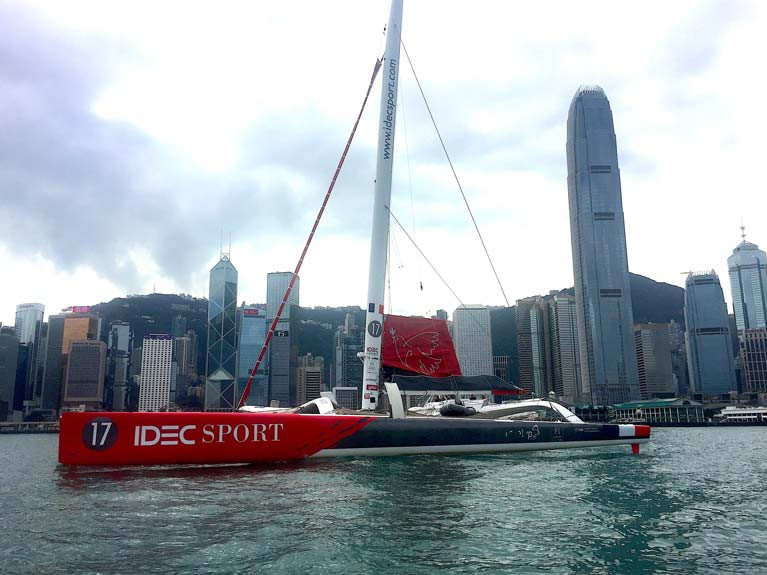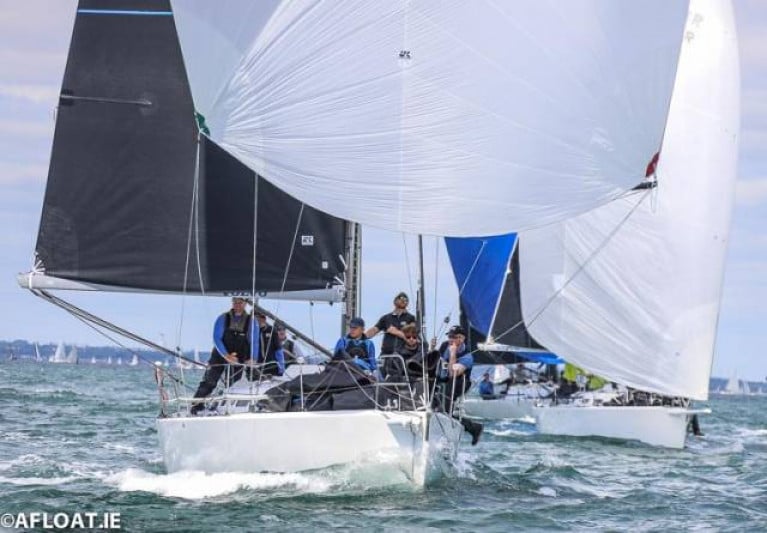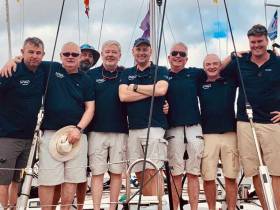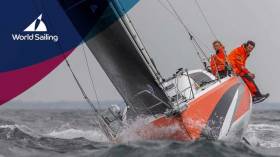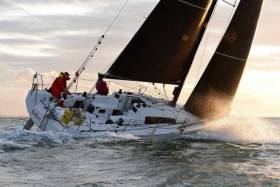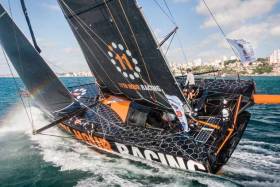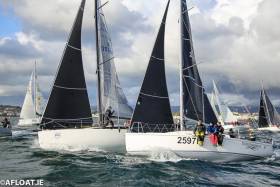Displaying items by tag: Offshore
Francis Joyon to Tackle the Tea Route Record Between Hong Kong & London
Francis Joyon will begin the final Act of the IDEC SPORT ASIAN TOUR at around 0900hrs UTC on Saturday morning with an attempt at the Tea Route record.
On this legendary route between Hong Kong and London, the reference time has been held since 2018 by the Italian, Giovanni Soldini. Once again with his small crew of four, including the boat captain Bertrand Delesne, the assistants and crewmen, Antoine Blouet and Corentin Joyon and his faithful friend, Christophe Houdet, Francis will be sailing on the route he sailed to get to the Far East at the end of last year, but this time in the opposite direction and without stopping. During his outward voyage, he set a new record for the Mauritius Route between Brittany and Mauritius and two new reference times for the trips between Mauritius and Ho Chi Minh City (Vietnam), and then between Vietnam and Shenzhen in China. His latest goal is to complete the voyage back to Europe in a time below that set by the 70-foot trimaran, Maserati and Giovanni Soldini’s crew of 36 days, 2 hours and 37 minutes, when they averaged 17.4 knots.
Following the route taken by the big clippers of the past
“We left Shenzhen yesterday for Hong Kong and the starting area for the record.” Francis is not planning to hang around and intends to set sail on Saturday morning at around 0900hrs UTC. By then, he will have carried out the final adjustments aboard the boat, tightening the tension of the mast and loading up the supplies for the long sprint that lies ahead of around 13,000 theoretical miles. “We have done our utmost in conditions that were not that simple to check the condition of the boat,” added Francis. “The crew is really enthusiastic about this so full of history, symbolising the trade between the British Empire and China. We shall indeed be bringing some tea back to London, as the big clippers of the past used to do. This time it will be organic tea from a fair trade source, as that was something that was important for Christophe Houdet.”
Risk of a cyclone in the Indian Ocean and suspense in the Atlantic
The route is largely characterised by the trade winds that the IDEC SPORT maxi trimaran is looking forward to. “We shall be setting off in some decent conditions,” explained Francis. “They are nothing special, but it does mean sailing downwind in the NE’ly trade winds as we head towards the Sunda Strait and the awesome calms that punished us so much on the way out here. It looks like it is going to be particularly calm around the Equator. Once into the Indian Ocean, there is the risk of a cyclone, where we could face average winds of 35 knots, but we will continue to sail downwind.” Sailing the vast distances in the South and North Atlantic will, as usual, mean dealing with the large Saint Helena high-pressure system in the South and the Azores high in the North, before we make our way right up the English Channel towards the Thames Estuary. “This Tea Route is really the big one for us in our epic adventure,” added the skipper of IDEC SPORT. “Christian Dumard, our weather advisor, expects to see us reach the Cape of Good Hope within the record time. So, there should be a lot of suspense on the climb back up the Atlantic.”
It is still possible to sail in Irish waters in your own cruiser-racer without involving enormous expense. You just have to be prepared to do it in a boat of economical size which is far from being the newest available. Admittedly you have to be skilled in your own maintenance in continuing to get full use from equipment which is well-proven through years of experience in its use. Then too, you have to be carefully selective in finding a mooring or berthing location which doesn’t cost the earth, and you have to be modest in your expectations of what you can achieve afloat, particularly if there are racing ambitions in the equation.
Of course, it is increasingly possible to sail in charge of a boat without having to own one. Talented potential Sailing Masters are soon identified by owners keen to win. And the development of boat rental is only in its infancy in much of Ireland on the sea coasts. Yet it’s obviously the only way to go for people with a reluctance to become too totally involved, their “rent it” approach reflecting today’s developing Tasting Menu Lifestyle.
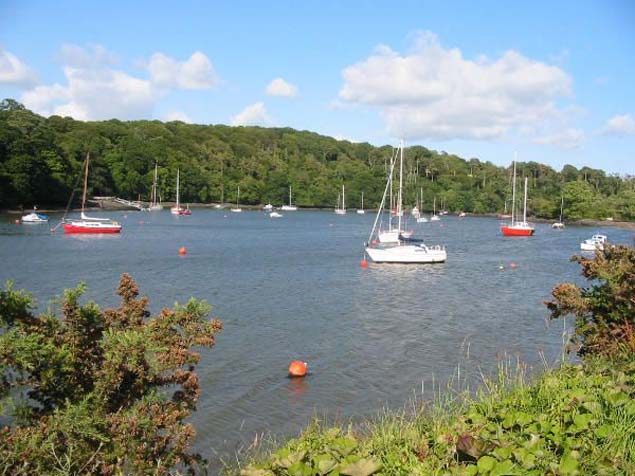 Drake’s Pool in Cork Harbour, a haven for those for whom boat-owning is a vocation
Drake’s Pool in Cork Harbour, a haven for those for whom boat-owning is a vocation
But for some, boat-owning is a vocation in itself. In fact, for some simply owning a boat is what it’s all about – the sailing is secondary. But whatever your way of looking at it, and at whatever level it’s made, the fact is that sailing is first and foremost a vehicle sport, and that involves costs which don’t arise in more straightforward athletic and other arena sports, which have the added advantage of the possibility of spectators prepared to pay to watch the action.
That generates a cash flow which – even with the most advanced new communications technology to follow a boat race – is difficult for sailing to provide. Yet despite that, sailing requires a significant capital outlay at some level, with a continuing rate of expenditure for it to happen at all.
The problem is rapidly exacerbated when international competition is expected as part of the programme, For sure, we can get reasonably inexpensive sailing if we stay at home on our relatively sparsely-populated little island with its wide choice of natural harbours, and freely available sailing water.
But if we seek the intensive sailing competition which is more readily available in the sailing areas used by highly-concentrated and affluent populations, the costs start to rise astronomically. And Ireland’s relative isolation immediately imposes that built-in travel expense at the most basic level before we’ve even got to the scene of the action.
The challenge which this poses was highlighted a month ago when Irish Sailing invited expressions of interests from individuals and teams – crews if you prefer – who might commit towards a campaign which could result in selection to sail for Ireland in the proposed two-person offshore racer – one woman, one man – which will feature in the 2024 Paris Olympics.
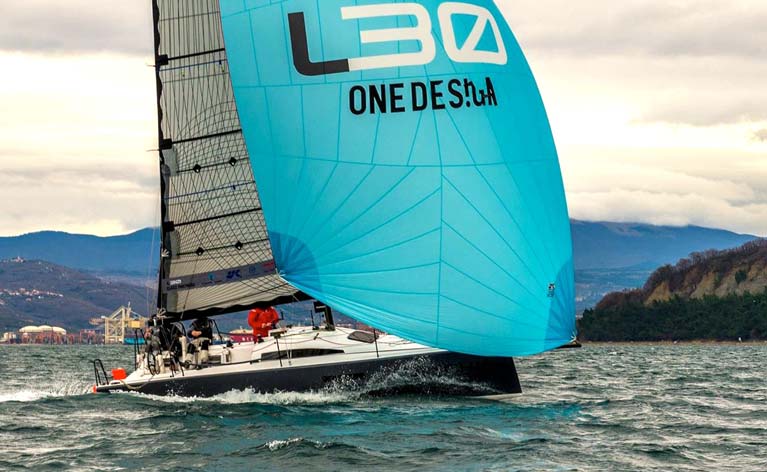 Designed by Olympic and Volvo Racer Rodion Luka of Ukraine, the L30 will be used for the World Offshore Championship 2020 in Malta in October
Designed by Olympic and Volvo Racer Rodion Luka of Ukraine, the L30 will be used for the World Offshore Championship 2020 in Malta in October
The sailing events in 2024 will be staged at Marseilles. It’s a significant distance from the main Olympic focus in Paris, but as it will involve racing on Mediterranean waters, 2020’s Offshore World Championship in concert with the Middle Sea Race in Malta at the end of October is seen as part of the buildup.
Irish Sailing made it clear that at the moment no funds are available for this new area for Olympic sailing, and with the level of longterm commitment involved, coupled with the annual Christmas/New Year hiatus in any official administration, we would not expect an announcement of definite plans at this early juncture.
But what it does mean is that there will be a clearcut regatta structure with boats of the Ukrainian Rodion Luka-designed L30 class available in Malta in the Autumn, and inevitably the overall framework of the new Olympic class circuit will draw on experience gained by the French offshore racing experience over fifty years and more in organising events like the Figaro, the MiniTransat and other majors where Open 40s and IMOCA 60s feature prominently.
Thus yet again we’ve to face the reality that any young Irish sailor keen to make the grade on the international offshore scene as an individual achiever - rather than as a professional crewmember - has to do it through the highly-structured French setup, as is currently seen with Tom Dolan and Joan Mulloy with the Figaro circuit, where Conor Fogerty is also involved.
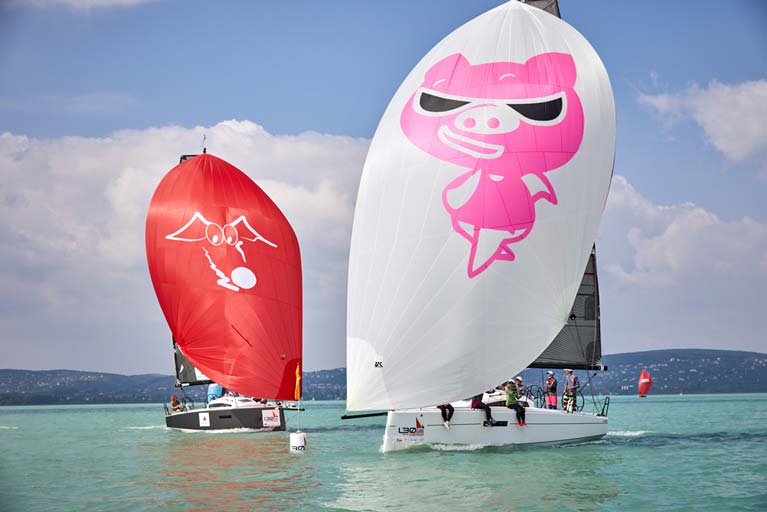 The L30 is multi-purpose, and like the JPK range, it aims to provide a genuine cruiser within the racer parameters.
The L30 is multi-purpose, and like the JPK range, it aims to provide a genuine cruiser within the racer parameters.
As for the additional cohort which will emerge from the Expression of Interest invitation, we would hope to see the names of Dillon, Rumball, O’Leary, Kenefick and others appear. But until the list is made official, we can think of many perfectly valid reasons why some top sailors of proven offshore ability would react with: “Thanks, but no thanks”.
For inevitably, the new Olympic offshore racing project will see increasingly complex official administration and detailed multi-media coverage, such that the tone of the event is beginning to seem a whole world away from the almost buccaneering atmosphere which prevails around established offshore classics, where larger-than-life characters put together colourful campaigns which reflect individual flair, enormous energy, and maybe very deep pockets too.
It’s a scenario that has seen imaginative solutions which achieved success in times past. But equally sailing history reveals occasions when possible solutions to the challenge of long-distance campaigns were less than satisfactory. To revert to the Olympics for one instance, back in 1964, the first Japanese Olympics post World War II were staged in Tokyo.
In its favour, it has to be said the event was staged in late October, when the weather is much less oppressively hot and humid than will be the case in July this year. But for the small Irish sailing team in 1964 of a Dragon skippered by Eddie Kelliher and crewed by Rob d’Alton and Harry Maguire, and a Finn sailed by Johnny Hooper, the sheer distance and the paucity of resources proved a major drawback.
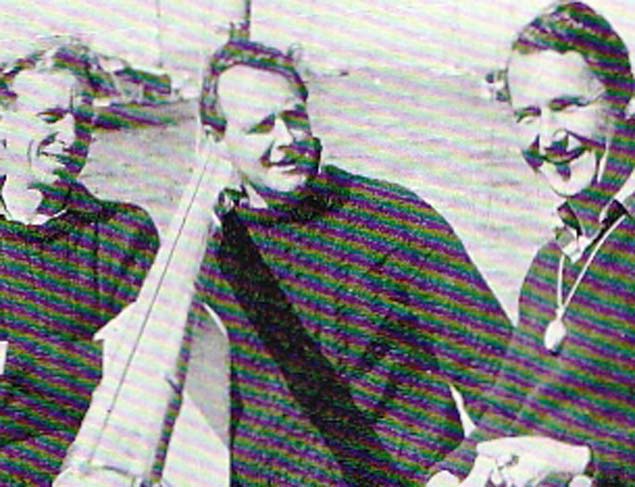 Ireland’s 1964 Olympic Dragon crew in Japan were (left to right) Rob d’Alton, Harry Maguire, and skipper Eddie Kelliher.
Ireland’s 1964 Olympic Dragon crew in Japan were (left to right) Rob d’Alton, Harry Maguire, and skipper Eddie Kelliher.
There was no question of shipping Kelliher’s successful Dragon Ysolde to Japan, so – like three other far-travelling teams - they took up the offer of a boat chartered from the small Dragon fleet in Japan, and brought their own sails. But once there, it emerged that the chartered boat had a mast so flawed that they had to scour the store-yard in search of a replacement, and as soon as the boat was put afloat it was discovered that the rudder was so faulty that they’d to lift out again and work round the clock in order to be able to sail.
Not surprisingly the boat’s performance overall was woeful, yet despite that they were usually in the frame in the early stages, getting good starts, and managing in one race to be first at the windward mark. But at the end, as Team Manager Leo Flanagan of Skerries reported, while they did finish as best overall of all the chartered boats, any future involvement in the Olympics must necessarily involve bringing the team’s own boat, as the three medallists had boats which were in a league of their own.
Fifty-six years on, and the Dragon class is Olympic sailing history, while thriving as never before as a private International One Design boat in its own closed circuit. As for the Olympic ideal, that is now for the host country to supply all boats on site for total uniformity, in the expectation that crews will already be well experienced in the boat types either through fleets in their own country, or in clusters based on groups of nations.
Either way, it is going to involve Irish crews in travel and all other expenses of overseas campaigning within a framework which – with 2024 already accelerating towards us – is going to be set by the French way of doing things, but it’s going to be the French way with an even further overlay of official administration set in a very European context.
For the fact is that the French sailing scene is so large and complex that within it you can find colourful instances of creative and imaginative individuality in non-Olympic sailing, but nevertheless in the 2016 Olympic Sailing Games they returned with three medals – a Gold and two Bronzes.
It’s a respectable enough total, but not outstanding, so success for France in the additional Offshore Class to the Paris Olympics will be a matter of intense ambition. Yet it could well be that the process of getting selected for such a coveted role in a very clearly designated route to nomination will be so fierce as to be psychologically damaging.
 The inspiration. Eric Tabarly’s beloved classic Fife cutter Pen Duick (built in Cork Harbour in 1898) at the Festival of Sail in The Morbihan in Brittany in May 2018 with boats of the Howth 17 Class (built in Carrickfergus in 1898)
The inspiration. Eric Tabarly’s beloved classic Fife cutter Pen Duick (built in Cork Harbour in 1898) at the Festival of Sail in The Morbihan in Brittany in May 2018 with boats of the Howth 17 Class (built in Carrickfergus in 1898)
For the great joy in assessing French sailing achievement is in relishing the unfettered inspirational individuality of the people involved, something which goes right back to the achievements of Eric Tabarly and beyond. These days, the spirit is well evoked by many top sailors, but one whose has genius in finding visionary logistical solutions on a high level is Gery Trentesaux.
We’re reminded of this with the news that his multiple-race-winning First 40 of ten years ago is joining the fleet in Dublin Bay. For although most folk will assure you that it is wellnigh impossible to get the mighty firm of Beneteau to change the specification of any of their middle range boats during construction, as the boat coming to Dublin Bay proves, the bould Gery was able to get them to give it a special hull lay-up and a completely new keel design, so this is no ordinary First 40.
After that, there was a meeting of minds when Gery linked up with boat-builder Jean-Pierre Kelbert, and he took the then-new JPK 10.80 to Cowes Week, where the hottest boat in the Solent was Adam Gosling’s Corby 36 Yes!. Once upon a time she was Peter Wilson’s Mustang Sally based in Howth, but in Cowes had been given a complete makeover to become the new Yes!, and Cowes Week champion two years running.
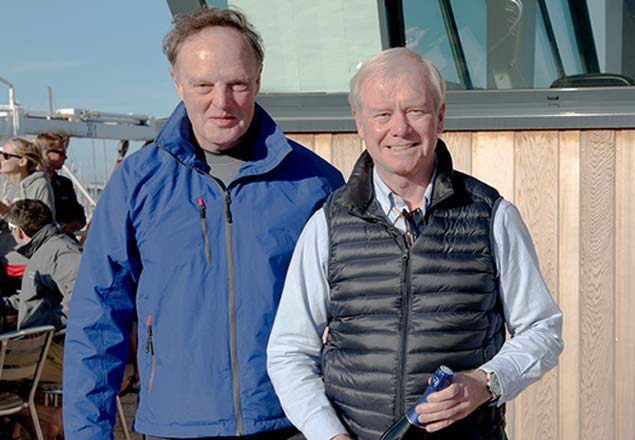 Ireland’s Michael Boyd (when Commodore of the RORC) with Gery Trentesaux
Ireland’s Michael Boyd (when Commodore of the RORC) with Gery Trentesaux
Things seemed to be following the same route the following year when Yes! and the new JPK arrived together at the weather mark in the first race, and then set off on a spinnaker reach, with the French boat’s spinnaker being trimmed by an amiable-looking bald guy smoking a pipe. By the time they reached the next mark, the JPK was at least a quarter of a mile ahead, without much apparent effort.
It was the fact that the bald guy felt relaxed enough to be calmly smoking pipe that did it. A new Yes!, a dark blue JPK 10.80 designed only for day racing, was soon on the way, and she launched her career by winning overall in the Round the Island Race the following year with Nin O’Leary calling the shots.
But Gery Trentesaux had by this time moved on, with his JPK 10.80 winning the Fastnet Race overall, and he soon had an idea of purest logistical genius. The JPK 10.80 really is a genuine cruiser-racer, and one of the boats was cruising the Pacific. Her owners were persuaded to shape their course for Sydney, where Gery and his crew were waiting with a completely new wardrobe of top racing sails, all nicely in time for the Rolex Sydney-Hobart Race 2015.
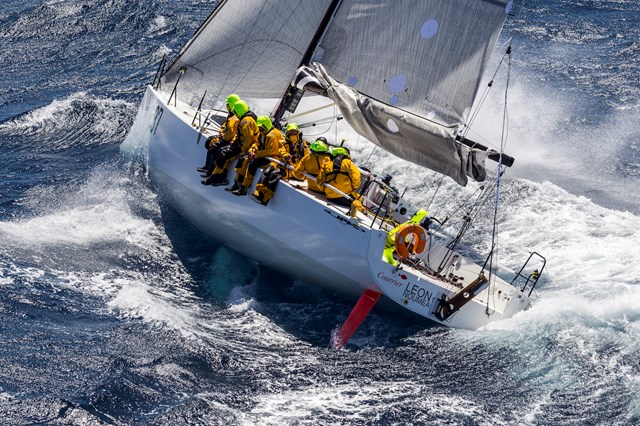 Same name, different boat – Gery Trentesaux’s borrowed JPK 10.80 Courier de Leon (with a Pacific Islands port of registry in Noumea) on her way to second overall in the 2015 Rolex Sydney-Hobart. Photo Rolex/Borlenghi
Same name, different boat – Gery Trentesaux’s borrowed JPK 10.80 Courier de Leon (with a Pacific Islands port of registry in Noumea) on her way to second overall in the 2015 Rolex Sydney-Hobart. Photo Rolex/Borlenghi
It was a very elegant solution to the challenges of long-distance campaigning, and in this their first Hobart Race, they were rewarded by taking second overall, a success which added to the mythology of the JPK story, which now includes Rolex Middle Sea Race wins and class dominance in the 2019 Rolex Fastnet Race, while last month’s Paris Boat Show saw Jean-Pierre Kelbert unveil the model of his latest baby, the JPK 10.30.
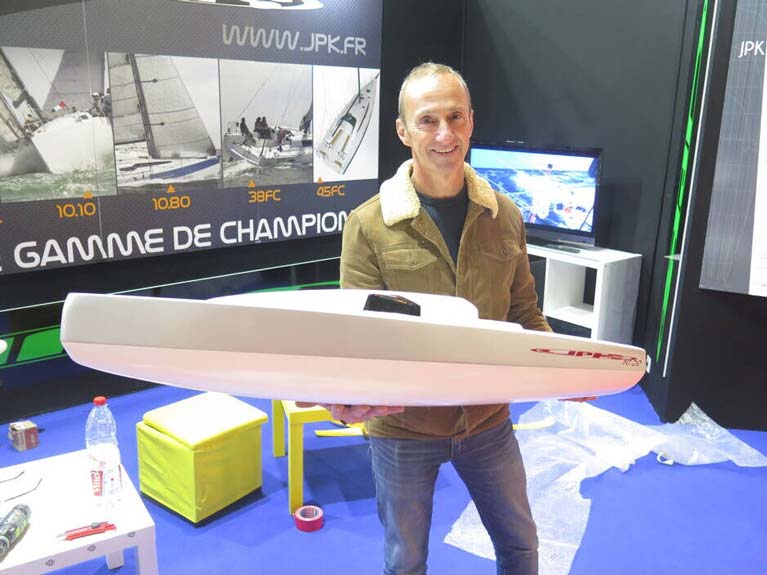 Jean-Pierre Kelbert with the model of his new JPK 10.30 at last month’s Paris Boat Show
Jean-Pierre Kelbert with the model of his new JPK 10.30 at last month’s Paris Boat Show
Other French international campaigners have come up with other solutions to the challenges of a privately-funded campaign in the Sydney-Hobart Race, and the recent 2019 race saw an interesting one with Frederic Puzin’s Ker 46 Daguet.
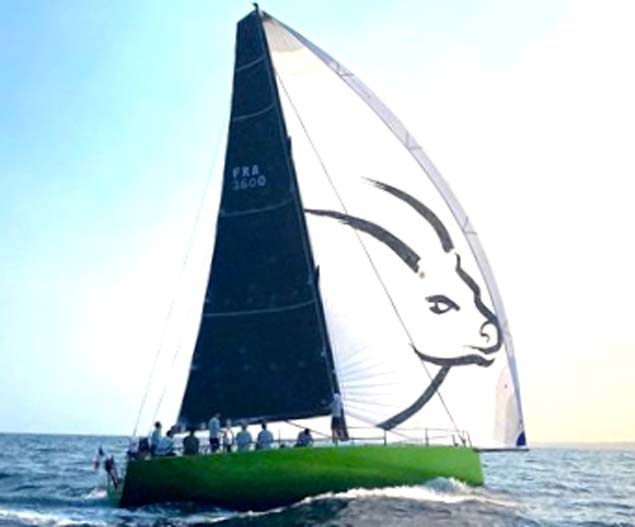 The Ker 46 Daguet (formerly Patrice) in training for the Sydney-Hobart race
The Ker 46 Daguet (formerly Patrice) in training for the Sydney-Hobart race
Puzin won the French Mediterranean Division 1 IRC championship in 2017 with his actively-campaigned Mylius 50 of the same name. But he reckoned that the hassle of getting the boat to Australia was out-weighed by the possibilities of having his own boat Down Under, so he bought the successful Sydney-based Ker 46 Patrice and after a massive re-vamp she re-appeared as the very green (as in leprechaun green) Daguet 3, racing to Hobart with a crew of several greats of French sailing such as Nicolas Troussel, Thomas Rouxel, and Sam Goodchild on board.
They certainly had their moments in the recent Hobart dash, giving Ichi Ban a hard time at one stage, and being indicated as overall leader at another. But in the end while they’d a first in ORCi-Div 2 and a fourth in IRC–Div 2, the relentless Sydney-Hobart grinding machine pushed them down to 29th overall in IRC.
 Daguet berthed in Hobart, where she acquired the nickname of Kermit. Photo: Ian Malcolm
Daguet berthed in Hobart, where she acquired the nickname of Kermit. Photo: Ian Malcolm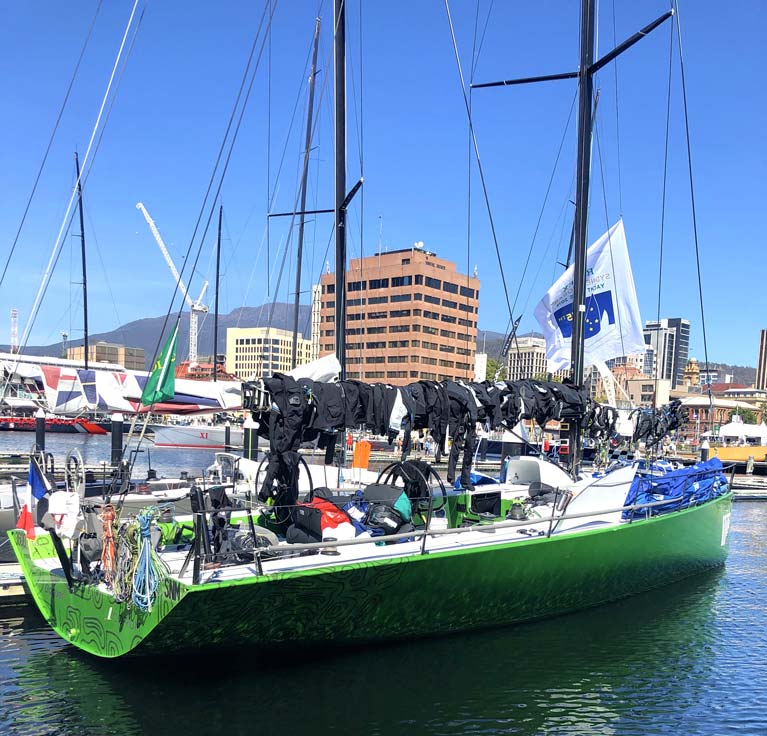 Daguet in Hobart. She may have slipped down the rankings after being first at one stage, but when the race is over the boat and gear still have to be cleaned, dried and stowed. Photo: Ian Malcolm
Daguet in Hobart. She may have slipped down the rankings after being first at one stage, but when the race is over the boat and gear still have to be cleaned, dried and stowed. Photo: Ian Malcolm
Nevertheless, French offshore racing now has a competitive proposition based in Australia and ready to go, and we may hear more of Daguet 3 in the months ahead. Meanwhile in Hobart, that totally green shade of green did not go unremarked, and the unfortunate Daguet 3 found herself nick-named Kermit, a bit of drollery which works very well at several levels, but none of them is politically correct in these very polite times…
Recalling Dublin Sailor's Offshore Success in October's Middle Sea Race
Professional sailor James Carroll overcame the disappointment of a dismasting in 2018 to win class two of October's Middle Sea Offshore Race on Stefan Jentzsch's Black Pearl, a German Carkeek 47. Here the Dublin Pitman, Sail Trimmer and Driver recounts the race and reveals plans for a new and bigger Black Pearl for 2020.
With the addition of a brand new bulb and an owner and crew hungry for victory, Black Pearl occupied pole position as we reached the home stretch in the 2018 Middle Sea Race. Following a very windy downwind leg with the A4 spinnaker, there were the customary squalls, thunder and lightning to contend with, which we have come to expect with the Middle sea race. We rounded the island of Lampedusa and were leading the race overall on IRC. We came up to a reaching angle with the J3 on a reaching strut, genoa staysail and full main. It was 4 am and pitch dark with the wind blowing at 25-30kts. We were getting ready to reef when we got hit by a gust and then heard a huge crack from the mast. It had snapped in the middle and fell directly to leeward.
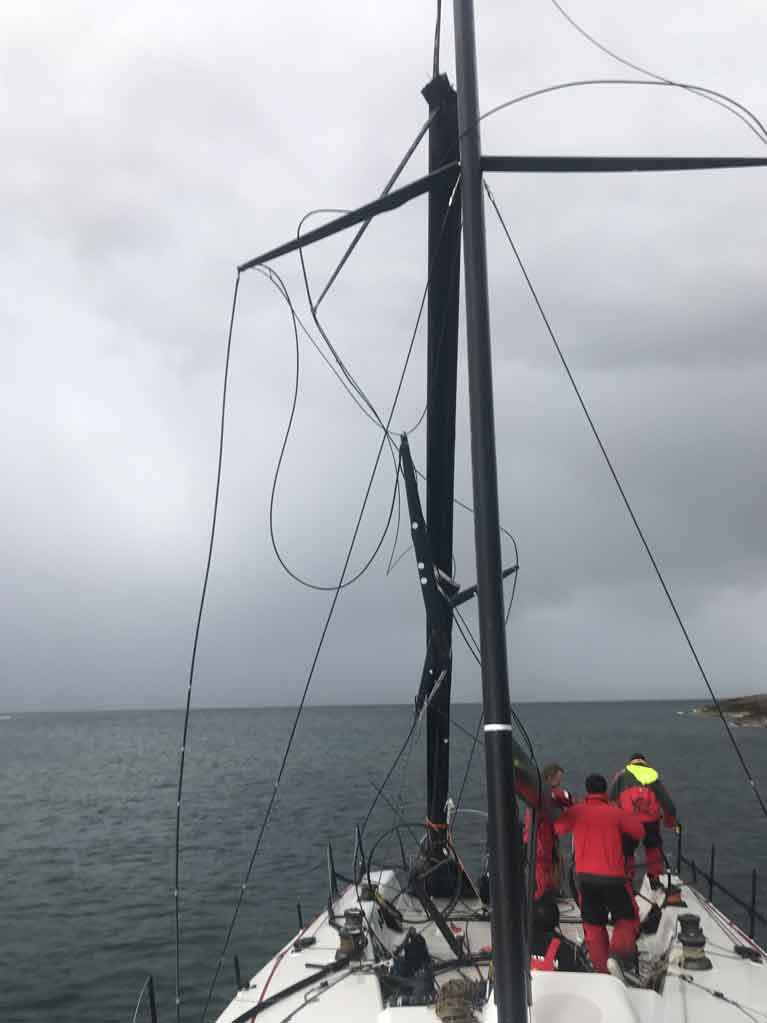 Dismasting and (below) jury rigged
Dismasting and (below) jury rigged

Thankfully nobody was injured, but we needed to get the situation safe and ensure the mast did not puncture a hole in the side of the boat. After over an hour of cutting and securing the broken pieces, we limped back to Lampedusa to effect repairs and come up with a plan. Due to bad weather conditions, it was three days before we could depart. Eventually, we motored back to Malta under jury rig. It was a devastating outcome for the owner and crew given that we were so close to winning.
We decided to ship the boat to Valencia to assess the damage, make repairs and commission a new mast. The new mast would be built by Hallspars Holland and was to be shorter. Jib area would stay the same. Spinnaker area reduced slightly and the mainsail area would remain the same, with a shorter P. The goal was to improve upwind performance and reduce slightly the downwind performance. With the lower sail plan and bigger bulb, it resulted in a lower CG and improved upwind performance particularly in waves and we were also faster reaching. Most importantly our rating also fell 3 points.
Unfinished business
Our first outing with the new mast was the Giraglia Race in June, which ended in disappointment as we were forced to retire. All the pressure was now on the Middle Sea Race where we felt we had some unfinished business.
We had a longer than usual pre-race prep of 4 days in Malta and felt in good shape for the race. After a 30-minute start delay due to wind, we started in 5-7 knots Southeasterly. We found ourselves ghosting over the start line at the pin end and had a perfect start. A beat out of Grand Harbour to the offset mark. We then rounded to an A1 spinnaker and a run down the coast. Passing slower boats was very tricky and there were big gains and losses. After clearing the spectator mark we were fetching at a TWA of 50-60* towards Sicily’s southeastern tip. We set-up to be the most easterly boat in the fleet.
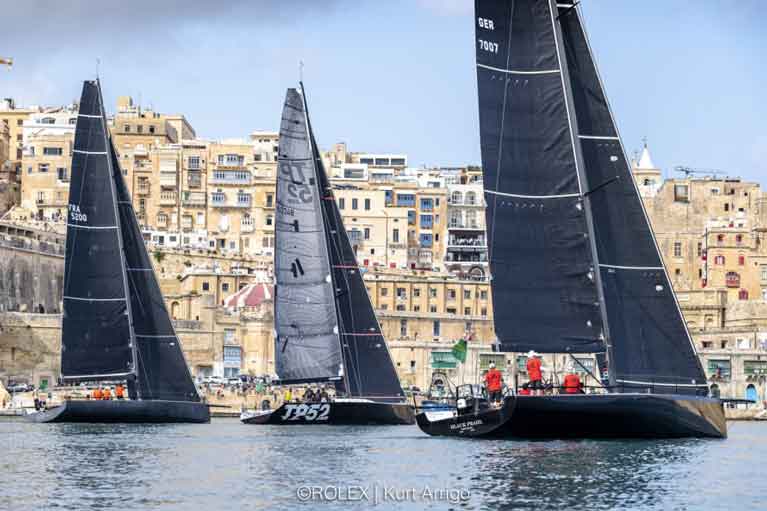 Light airs at the start of the '19 race
Light airs at the start of the '19 race
Our pre-race weather advice showed that the wind would go very light approaching the Sicilian coast and recommended to be east of the fleet. Unfortunately, that proved incorrect and we woke on the morning of Day 2 with a 18-mile deficit to the leading 50 footer. Instead of dwelling on the loss we focused on our approach to Messina and the strategy for getting through. By midday, we were VMG running in 6-10 knots and worked to the mainland shore. Committing to mainland shore reduced the time spent in foul current and there was also better pressure on the shore.
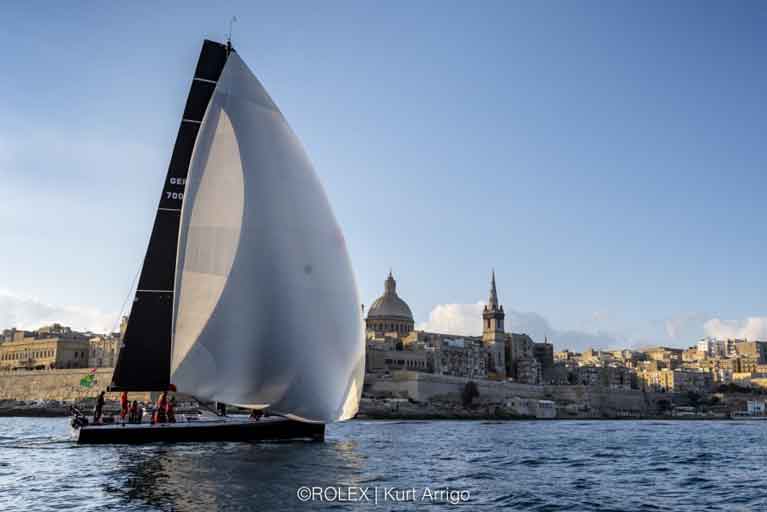
Once clearing Messina, we realised that we had closed the gap on the group of 50fters and could see their lights as the sunset. Two gybes early to stay clear of an area of light winds and we laid through to Stromboli. A favourable left shirt and we set-up for a wide approach of the island, as the wind shadow had caught us out four years earlier in the same race. VMG running in light winds, we gybed five miles stood off Stromboli. We were treated to a few hours of fireworks from the erupting volcano and were now right in touch with our competition and the wind was getting even lighter.

On the morning of Day 3, we were set-up for a long day of VMG downwind chess, trying to stay out of areas of light winds while keeping the boat moving. We were changing between the wind seeker (our Spinstay tacked off the end of the bowsprit on the fractional halyard) and our A1 spinnaker. When the A1 would fly, then that was the sail and when it started to collapse, we would change bareheaded to the Windseeker. With the Windseeker we could keep the boat moving albeit at 1-2 knots of boat-speed, just about keeping steerage. There was a leftover westerly swell and that made it very hard to make progress west on a port gybe, so we needed 4 knots of wind speed or more to make progress on port gybe. This light airs requires maximum concentration from all the on-watch crew and lots of patience. We remained focused and input on strategy from all crew was considered.
During the morning we had passed a number of our 50ft competitors and the front of the fleet compressed. We were now sailing with the Volvo70s and 80 footers. Rambler was the only boat that had got through the light airs and was on the leg to Lampedusa. Finally, the wind steadied at 95-105TWD and 6-7 knots and this allowed us to get onto port, bank our gains and be laying Capo San Vito (the north western tip of Sicily). On approach the breeze went forward and we were hard on the wind passing close to the islands off Trapani. We were behind the IRC 52 Arobas and her stern light two miles in front, meant we were right back in the race.
The breeze built overnight which was expected and a nice jib change from J1 to J2 just before we exited the wind shadow of one of the islands, set us up nicely for the increase in pressure. Once we cleared Trapani and got away from the shore we had a solid 18-20 knots fetching on port at the island of Pantelleria. The sea was rough and it was a bouncy ride onboard. Rambler was now finished as we rounded Pantelleria and braced ourselves for the leg up to Lampedusa. We had a nice setup with the J2 and a reef in the mainsail. When the breeze was sub 20 knots we could be at Full main and when it was above 22 knots we were at 1st reef. This made for very efficient moding, rather than trying to do a change to a smaller jib. We took a couple of tacks on shifts and made some good gains relative to the boats that did not.
We were still just in touch with Arobas as night fell on Day 4 and on approach to Lampedusa. Some tricky short tacking up the Lampedusa shore and we were now on starboard tack fast upwind angle on the leg back to Malta.
The breeze got lighter as we approached the channel between Malta and Gozo. We took 2 tacks and laid the channel. The sun was now coming up and the 50fters behind us could clearly be seen. In the channel, the breeze got very light and shifty. We changed to the Masthead cableless Code zero and were reaching at 100TWA at the northeastern end of Malta. A change on deck to have the J1 ready was a key speed decision and so when we exited the channel it was J1 upwind to the fairway mark off the finish. Rounding the fairway mark we hoisted the A2 and ran to the finish.
We knew that we had beaten the Class 2 boats behind us as they gave us time, but unfortunately we were not sure where Arobas had finished and so we needed to wait. A relief when we found out that they had finished just 52 minutes ahead of us, which was not enough time and thus Black Pearl secured the IRC Class 2 win. It was a great result considering the disappointment of the previous year.
A very worthy winner of the race was Maltese yacht Elusive 2 skippered by a good friend of mine and local man Chris Podesta. They sailed a great race and put a very good campaign together.
A new Black Pearl is now in production and will be an offshore focused carbon 56 being built by King Marine in Spain. The Carkeek 47 is up for sale and looking for a new home. The program for 2020-21 will be to race the new 56 in the offshore classics and build on the successes of the 47.
 James Carroll
James Carroll
James Carroll is a professional sailor with experience of competing at the highest level for over 18 years. He has competed in the Volvo Ocean Race, TP52s, Maxi World Championships and the Sydney to Hobart races. Both inshore and offshore racing he specialises as a Pitman, Sail Trimmer and Driver and has filled that role for multiple high profile international teams. With a background in boatbuilding and rigging it has complemented his sailing experience. James has been Project Managed numerous successful racing boat builds and overseen many complex refit projects in Europe, USA, China, Dubai and UK.
National Yacht Club Crew Fourth in Atlantic Rally for Cruisers
A National Yacht Club crew from Dublin Bay have finished fourth in class and fourth monohull in the 2019 Atlantic Rally for Cruisers (ARC).
As previously reported on Afloat, the NYC crew made the crossing in the 80-foot Swan yacht Umiko.
The transatlantic crew were former NYC Commodore Paul Barrington, Paul Fagan, Teddy Murphy, Dave O’Reilly, Barry O’Sullivan Alan Daly and Brian Uniacke. The NYC sailors were also joined by a father and daughter from Sweden Carl and Carolina Urban. The skipper was Olly Cotterdel.
 The NYC crew cross the finish line in St Lucia Photo: Photo Action
The NYC crew cross the finish line in St Lucia Photo: Photo Action
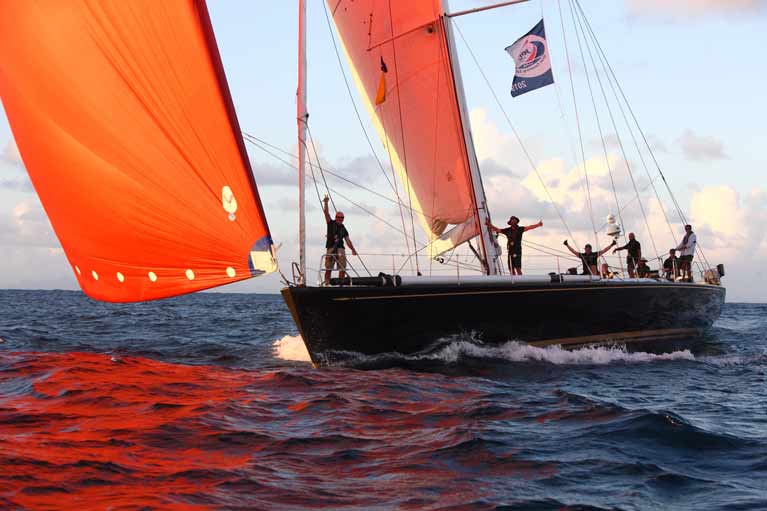
It is the second transatlantic success in as many days for the NYC as cadet member Conor Totterdell finished second in the RORC Transat race.
Irish Sailing Seek Expressions of Interest for Offshore World Sailing Championships 2020
World Sailing has recently announced the criteria for selecting teams for the Offshore World Sailing Championships scheduled to be held in Malta from 10 – 22 October 2020. This is a newly established event for a double-handed mixed crew.
There are a maximum of 20 entries for the World Championships, and if there are more than 20 countries seeking an entry, a qualifying series will be held in Western Europe sometime during the period 1 May – 30 June 2020 to establish the European entries into the event.
MNAs (Member National Authorities) are responsible for selecting and entering the team to represent them at the 2020 Offshore World Championships. Irish Sailing has submitted a request to World Sailing for entry to a qualification event, to allow for an Irish Team to be represented.
Irish Sailing would like to hear from anyone who is interested in entering a team into the event. Please note in particular the Athlete Qualification Event Requirements under section 5 of the attached notice. While Irish Sailing is very supportive of, and will facilitate the process for the selection of a team, it should be noted from the outset, that Irish Sailing has no budget for this event and all costs will be borne directly by the teams competing.
Once we have an indication of the level of interest, we will establish a process for the selection of a team to represent Ireland.
Please submit your expression of interest before 5th January 2020 to [email protected] stating the names of your team members (one male, one female) and a brief CV of experience.
You can read the World Sailing Information Document below
National Yacht Club Cadet Conor Totterdell Second in RORC Transat
Dubin Bay sailor Conor Totterdell of the National Yacht Club has just completed his first transat race on a Lombard 46, Pata Negra in the 2019 RORC Transatlantic Race.
The race proved to be a test of competence in many different areas. A steady breeze off the stern quarter of between 15-30 knots provided tense and fast racing with Bouwe Bekking aboard Swedish VO65, Childhood 1, registering a 24-hour run of over 400nm and taking line honours.
Pata Negra, with a young crew aboard, had to contend with a minefield of problems. A broken tooth on the first day was repaired by Conor with Dalkey Clinic dentist and NYC member, Dr Jill Marshall, giving advice via mobile phone as the boat hit 17-knots with spinnaker flying! Worse was to come, with the boat’s water maker failing 28 hours into the race necessitating a pit stop into El Hierro, the smallest of the Canary Islands, to fill up with 400litres of water before heading down to the trade winds.
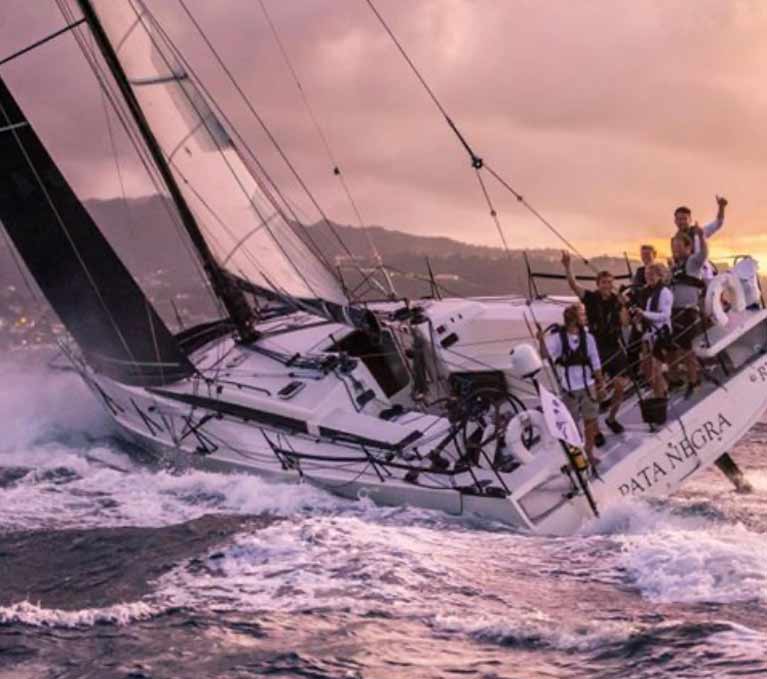 Pata Negra
Pata Negra
From then on it was a catch-up race. The team did not miss a gybe and calculated their course so precisely that despite travelling 3767nm, 200nm more than their symmetric-spinnaker’d opponents; snapping both masthead halyards; nearly blowing the mast fitting for the fractional and J3 halyard, Pata Negra not only caught up with the fleet but roared past them to finish 2nd overall, by any standards an amazing result!
Next on the agenda is to take the boat to Antigua and prep it for the Caribbean 600 which starts in February. Results here.
RYA Calls For Sailors for Britain's Double-handed Olympic Mixed Offshore Keelboat
The RYA is on the hunt for sailors and boat owners interested in the new double-handed mixed offshore event that will debut at the Paris 2024 Olympics.
This exciting discipline will see mixed pairs battle it out over a 4-day offshore race in a new showcase for the sport.
As Afloat reported earlier, planning for Paris 2024 is already underway. The RYA has registered an entry for a British team in the 2020 World Sailing Offshore World Championship (OWC), held in conjunction with the Rolex Middle Sea Race.
The RYA would now like to hear from any motivated and experienced sailors interested in trying double-handed offshore sailing, and they are also keen to hear from any boat owners who may either be looking for a racing partner or prepared to loan or charter a suitable boat to others.
Jack Fenwick, RYA Keelboat Manager, is hoping to bring interested parties together in early 2020 with a view to running doublehanded offshore taster sessions and training next spring.
"Double-handed offshore sailing could appeal to a wide range of people from professional sailors to existing or former international sailors, or perhaps even those just graduating from our RYA British Keelboat Academy," he said.
"At this stage we would like to hear from as many people as possible to try and build a database of interested parties. We would particularly like to hear from yacht owners who might be looking for partners to get afloat and give it a try."
In a vote of confidence for the existing RORC racing series, the RYA has announced that selection for the OWC, taking place in Malta in October 2020 in L30 yachts, will be based solely on the popular RORC Channel Race which starts from Cowes on August 1.
"We believe the existing RORC Racing calendar of events will provide excellent training opportunities and should be a huge advantage to British medal hopes in 2024. It would be great to see lots of teams fighting it out for the double-handed trophies within the RORC's Season Points Championship" said RYA Director of Racing, Ian Walker.
RORC Racing Manager Chris Stone explained: "In 2020 the Channel Race will run as normal for our IRC rated fleet but we will extend the race for those double-handed mixed entries who wish to be considered in the RYA selection for the OWC. The intention is for this selection event to best replicate the duration of the OWC which is likely to be 3 or 4 days."
RORC racing is IRC rated and not one design so in order to best reflect the criteria of the new Olympic equipment, the RYA selection for the OWC will only be open to fixed keel, monohulls within a proposed IRC rating band between 0.990 and 1.055 (subject to confirmation).
Ian Walker: "We need to strike a balance between keeping the rating band as narrow as possible to minimise the impact of the boats' rating differences on the results and making the selection as accessible as possible for a range of suitable existing boats. We will confirm the rating band after any revisions to the IRC rule for 2020."
The official selection policy will be published by 1 March 2020 but anybody interested in getting involved in double-handed, mixed offshore sailing is warmly encouraged to register their interest by sending an e-mail containing details of their sailing experience, aspirations and their boat (if they have one) to: [email protected].
If more than 20 nations enter the OWC then there will need to be a country qualification event in Europe in May / June 2020. Britain would then need to send a representative team to aim to qualify a place for Britain for the OWC in Malta and an announcement will be made on how these representatives will be selected once the details are announced by World Sailing in due course.
World Sailing has sent a shout out to its member countries to take part in the 2020 Offshore World Championships, to be held in association with the Middle Sea Race in October 2020. The prospect of the new Olympic class has already developed a pool of Irish interest.
Most sailing developed nations will regard this event as the opening of their 2024 Olympic Offshore campaigns. The event will be a mixed two-handed offshore race, of approximately 4 days/3 nights duration. (same as that proposed for the 2024 Olympic Games)
Entering nations will have to qualify for the limited fleet event. 20 L30 yachts will be supplied to competitors, but the organisers have not yet determined the event(s) that will qualify for the championships.
Ireland has a burgeoning interest in this offshore scene with forays on the international offshore circuit already carried out by a crop of talent such as David Kenefick, Tom Dolan and Joan Mulloy in Le Figaro Race. More recently, in June 2019, there were 2024 declarations made by Conor Fogerty and Susan Glenny.
World Sailing is awaiting to determine the interest level before finalising the qualification events, but they have determined the principles on which they will be based. They say:
“The intention is to hold all Qualification Events in Europe for 2020. By hosting the 2020 Qualification Events in one European venue and with one fleet of boats World Sailing believes that sailors and MNAs will have a unique opportunity to fast track their knowledge of this exciting new event.”
World Sailing believe that it will be possible to develop Qualification Events for the Offshore World Championships in all continents from 2021 onwards.
Countries can express their interest by submitting the pre-entry fee of €2,500 to World Sailing no later than 20 December 2019.
Irish Rivals Mulloy & Ferguson Still Battling It Out in Transat Jacques Vabre 2019
After 14 days at sea and with the IMOCA podium decided, PRB and Charal are fighting for 2nd and 3rd place in the Imoca category of the Transat Jacques Vabre 2019. It's a race with continuing Irish interest as two solo sailors battle it out both approximately 900 miles behind the leader. Joan Mulloy from County Mayo as Afloat reported here and Mikey Ferguson in County Down here are neck and neck in 25th and 26th place according to rankings here.
After Apivia coasted to a moonlit victory in the IMOCA class 15 hours earlier, the Bay of All Saints witnessed one of the closest podium finishes in the history of the Transat Jacques Vabre Normandie Le Havre in glorious sunshine on Sunday. PRB held off Charal to take second place by just six minutes and 18 seconds, little over a mile after both had covered over 5,000 from Le Havre since the start a fortnight ago.
Kévin Escoffier and Nicolas Lunven on their 60ft monohull, PRB, built in 2009, but upgraded with foils in 2018, had the latest-generation foiler and red-hot favourite at the start, Charal, breathing down their necks all the way long the coast of north-east Brazil. The gap closed to just over a mile, but as it went soft – an unstable 6-8 knot westerly, in the approach to the Bay of All Saints, Charal’s advantage evaporated and they could not find a way past.
The 39-year-old Escoffier, from one of the most famous sailing families in France, must have drawn on all of his experience, as a winner of the Volvo Ocean Race last year, the Jules Verne Trophy in 2012 and of the 2005 Transat Jacques Vabre in the Multi50 to hold on.
Not for nothing is this biennial double-handed race heralded as the longest and toughest transatlantic race in the calendar.
For Jérémie Beyou, the winner of this race in 2013, and Christopher Pratt the last three days have marked a great comeback from sixth place and evidence of the speed of their boat, but it was not the podium place they were hoping for.
As close as this chase was, the race will be remembered for their spectacular stall in the Doldrums – one of the most extraordinary in the history of offshore racing.
Charal was 120 miles ahead of Apivia when they entered the Doldrums at around 07:30 on November 5. At times they completely stopped as Apivia redirected 50 miles east and flew by, almost without pause. Every time they had looked like finally escaping the clutches of the Inter Tropical Convergence Zone, they were sucked back in.
Apivia’s early acceleration in the trade winds meant that even when Charal was out of the Doldrums on November 8, they continued to lose miles, peaking at being 302 miles behind at the 19:00 (UTC) ranking on November 8 – a total loss of 422 miles.
America’s Charlie Enright with French co-skipper, Pascal Bidégorry, finished fifth on 11th Hour Racing as the boats stacked up in the Bay of All Saints in quick succession. Britain’s Samantha Davies is not far behind in seventh and has closed to within 10 miles of Banque Populaire, but with only 34 miles to the finish.
Arrivals
Kévin Escoffier and Nicolas Lunven, on PRB, have finished second in the IMOCA class of the 14th edition of the Transat Jacques Vabre Normandie Le Havre after crossing the finish line in the Bay of All Saints in Salvador de Bahia, Brazil on Sunday, November 10, 2019 at 16:04:42 (UTC), 14 days, 03 hours 49 minutes and 42 seconds after leaving Le Havre, Normandy, France on Sunday, October 27 at 12:15 (UTC).
PRB covered the theoretical course of 4,350 nautical miles at an average speed of 12.84 knots but actually sailed 5,035 nautical miles at an average speed of 14.82 knots. It finished 15 hours 41 minutes and 42 seconds behind the winner, Apivia.
Jérémie Beyou and Christopher Pratt, on Charal, have finished third in the IMOCA class of the 14th edition of the Transat Jacques Vabre Normandie Le Havre after crossing the finish line in the Bay of All Saints in Salvador de Bahia, Brazil on Sunday, November 10, 2019 at 16:11:00 (UTC), 14 days, 3 hours 56 minutes and 0 seconds after leaving Le Havre, Normandy, France on Sunday, October 27 at 12:15 (UTC).
Charal covered the theoretical course of 4,350 nautical miles at an average speed of 12.83 knots but actually sailed 5,116.17 nautical miles at an average speed of 15.05 knots. It finished 15 hours 48 minutes and 0 seconds behind the winner, Apivia.
Class40: The leading trio escapes
In contrast to Charal’s fate in the Doldrums in the IMOCA, Crédit Mutuel has held its healthy lead of 54 miles over Britain’s Sam Goodchild on Leyton. Now in the south-east trade winds, Leyton has carved out a 70-mile lead over Aïna Enfance & Avenir. The rest of the Class40s are still stuck in the Doldrums.
“We’re beginning to have the unpleasant feeling of being the butt of a joke that has lasted for three days now, Valentin Gautier said from Banque du Léman, adding that they seen the maxi trimaran, Gitana on the AIS…doing 18 knots in the Doldrums! “Mostly, we’ve been calming our nerves by saying that it's the same for everyone, except that now, that's not the case! Our friends in the west, who we’ve been hunting, seem to have passed through without much trouble, and us hunters have become the hunted without even realising it.” told this morning in a message from the sea Valentin Gautier aboard Bank of Leman, which also adds to having seen the AIS maxi trimaran Gitana ... 18 knots in the Doldrums!
Only 7 Class40s were still sailing in the north-east trade winds today – they still have the Doldrums awaiting them. The fleet stretches for 1,000 miles from Crédit Mutuel to Terre Exotique to the south of the Cape Verde islands.
Damage: Arkea Paprec completely foiled!
Without their port foil after damaging it in the delivery to Le Havre, Arkea Paprec, in 5th position at the exit of the Doldrums has now suffered the breakage of its starboard foil. They are in ninth and dropping. “We got out of the Doldrums reaching on a port tack, with 16-20 knots of wind, flat sea, so we said ‘these are our conditions, let’s go, it’s time to put our foot to the floor’,” Sébastien Simon said. “We were starting to think the podium was possible but two hours later the foil broke, without warning. So, we’re in a sailing without foils. There’s not much left of her.”
ISORA 2020 Calendar Includes Dun Laoghaire to Cobh Race
The 2020 ISORA Race calendar will include a Dún Laoghaire to Cobh race in July as part of the official Cork300 celebrations. The full 2020 ISORA calendar of 13 races is downloadable below.
The 2020 season will start on April 18th in North Wales and April 25th in Dun Laoghaire with 40-mile coastal races sponsored by Viking Marine on either side of the Irish Sea.
A week later, on May 2nd, the fleet, now totalling over a 60-boat entry, will undertake the first of the season's seven offshore fixtures from Dun Laoghaire to Holyhead, with the Welsh finish location still to be confirmed.
June's Round Ireland Race from Wicklow is not part of ISORA's 2020 schedule.
On July 9th, the fleet takes in a reenactment of a historic race from Dun Laoghaire to Cobh (Kingstown to Queenstown) as part of their offshore fixtures with the 150-mile race being a season highlight. The offshore race is designed to be an official feeder for Royal Cork Yacht Club's tricentenary celebrations in Cork Harbour.
Race 8 on the 24th July Coastal Race will be a 40-mile night race.
The season concludes with race 16 Race and a Pwllheli to Dun Laoghaire offshore 80-miler on September 5th
The full 2020 ISORA calendar of 13 races is downloadable below.





























